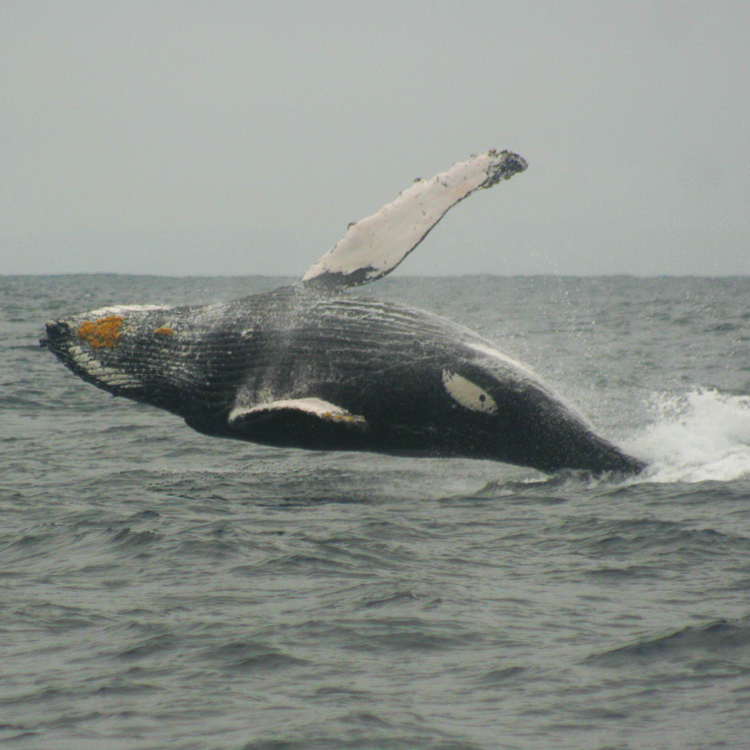
Late June to late September only.
Like other large whales, the Humpback Whale (Megaptera novaeangliae) was subjected of indiscriminate fishing. Its population was reduced by 90% before the moratorium implemented in 1966. Since then the population has recovered partially and in early years had reached the coast of Ecuador to mate and give birth to their off-springs during the southern hemisphere’s winter. Humpback whales are very curious and spontaneous.
They might approach swimming around and about your boat. This curious behavior has made them the ideal target for whale watching tourism in many parts of the world since 1990, and is highly required by tourists because they have demonstrated outstanding jumps that have greatly captivated audiences.
Like other cetaceans and mammals, females are very protective of their off springs and try, by any means, to place between them and the boats. The operators had coordinated a protocol to prevent harassment to the whales.
In South America, particularly in the ocean waters of the Ecuadorian coastal provinces of Manabí and Santa Elena, and also close to Isla De La Plata, you might spot the humpback whale. They are waiting to be seen.
The whale watching operation mounted in Puerto Lopez takes into account the safety of the passengers and aiming for a minimal impact to these beautiful creatures. All agencies are working together so they provide the same cost and offer free shuttle service from/to Surf Hotel Finca Punta Ayampe and the boarding place in Puerto López’ harbor. Refreshments and snorkeling equipment (Snorkel) are included in the tour. You will be able to admire these beautiful creatures in their mating and reproduction processes.
